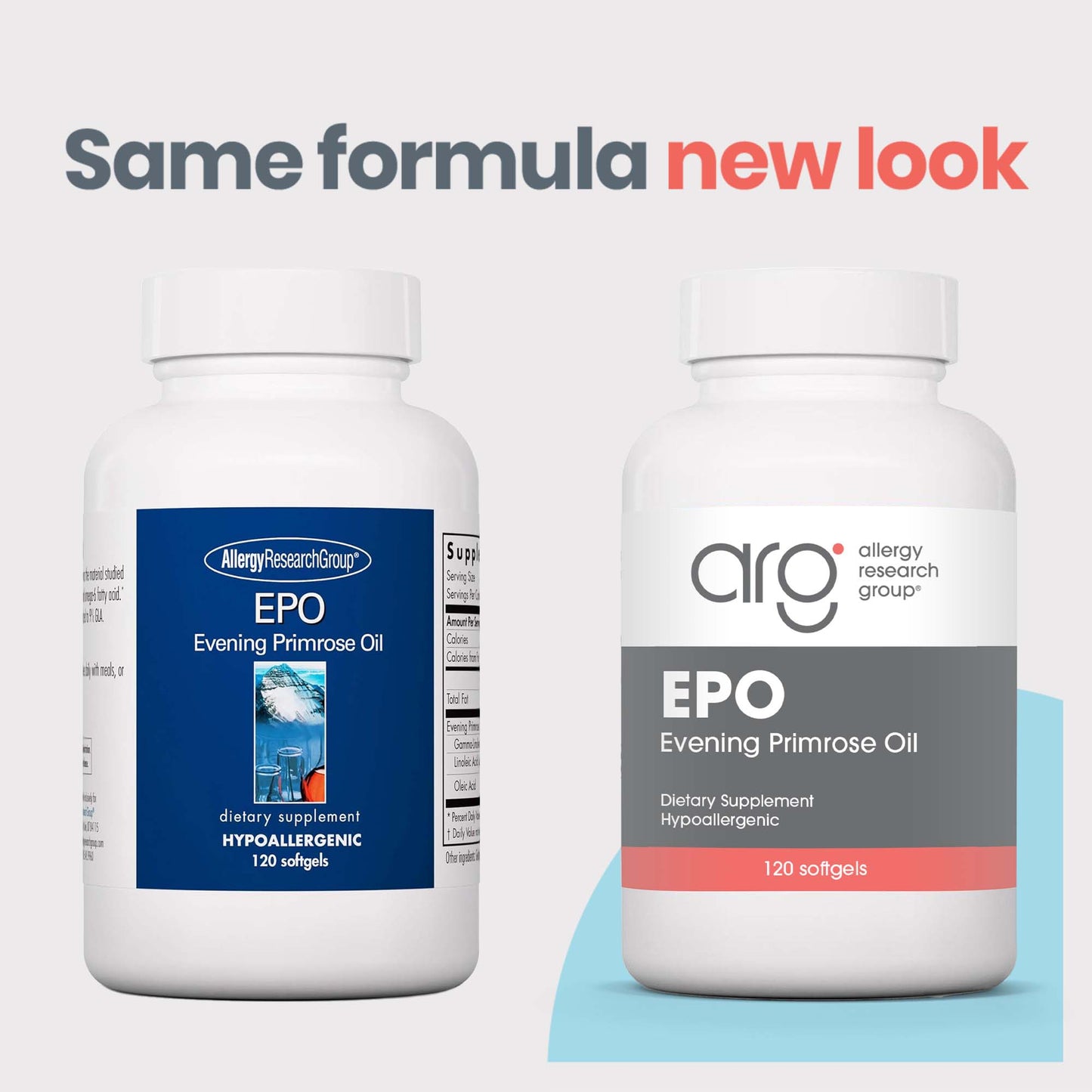Supports hormonal balance, skin hydration, and eye comfort with GLA from Evening Primrose Oil*
What It Does
EPO – Evening Primrose Oil delivers 45 mg of gamma-linolenic acid (GLA) per softgel to support hormonal balance, skin integrity, and tear production.* GLA helps maintain healthy prostaglandin activity and cytokine responses, which play essential roles in menstrual comfort, menopausal symptom relief, and epithelial tissue hydration.*
How It Works
• Gamma-Linolenic Acid (GLA): A key fatty acid in evening primrose oil that supports cell membrane structure and is a precursor to prostaglandin E1 (PGE1), which helps balance cytokines and hormonal signaling.*[1-3]
• Hormonal Health: Clinical studies show that daily supplementation with 1,000 mg EPO twice daily (delivering ~180 mg GLA) for 4–8 weeks supports mood, energy, and vasomotor symptoms in menopausal women.*[4-6]
• PMS and Breast Discomfort: EPO in doses of 1.5–3 grams daily has been studied for its ability to support common premenstrual symptoms, potentially through its modulation of prolactin activity and prostaglandin signaling.*[3]
• Skin Barrier Function: GLA supports skin hydration and barrier integrity by influencing lipid composition and prostaglandin production, with measurable improvements seen in moisture retention and skin smoothness.*[7-9]
• Eye Comfort: In contact lens wearers, 300 mg of GLA from EPO over six months supported tear production and comfort compared to placebo, likely through effects on ocular surface cytokine balance and barrier function.*[10-12]
Who It’s For
EPO is ideal for women seeking support for menstrual or menopausal symptoms, and for individuals interested in promoting healthy skin and eye hydration.*
Special Features
Each softgel provides a standardized dose of 45 mg GLA from 500 mg evening primrose oil, offering flexibility for personalized dosing from foundational to clinically studied ranges. Cold-pressed and non-GMO.*
References
1. Fan YY, Chapkin RS. J Nutr. 1998;128(9):1411–4.
2. Fang W, et al. Can J Physiol Pharmacol. 2010;88(5):576–83.
3. Kapoor R, Huang YS. Curr Pharm Biotechnol. 2006;7:531–4.
4. Gandhi AB, Desai A. J Indian Med Assoc. 2022;120(7):75–9.
5. Kazemi F, et al. J Menopausal Med. 2021;27(1):8–14.
6. Safdari F, et al. J Menopausal Med. 2021;27(2):58–65.
7. Muggli R. Int J Cosmet Sci. 2005;27(4):243–9.
8. Senapati S, et al. Indian J Dermatol Venereol Leprol. 2008;74(5):447–52.
9. Chung BY, et al. Ann Dermatol. 2018;30(4):409–16.
10. Simon D, et al. Adv Ther. 2014;31(2):180–8.
11. Kokke KH, et al. Cont Lens Anterior Eye. 2008;31(3):141–70.
12. Barabino S, et al. Cornea. 2003;22(2):97–101.





